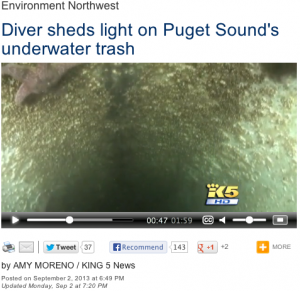Monthly Archives: September 2013
Tox-Ick in the news!
SPU Alert!
NEWS RELEASE
Sept. 4, 2013
For Immediate Release:
| Contact: | Seattle Public UtilitiesAndy Ryan, (206) 684-7688Pager: (206) 997-5972 andy.ryan@seattle.gov |
OR | Department of Planning and DevelopmentBryan Stevens, (206) 684-5045bryan.stevens@seattle.gov
|
Big storm coming; contractors asked to inspect storm drain socks
Public urged to help clear clogged drains where it is safe and practical to do so
SEATTLE — With a big, late-summer storm expected to bring occasional downpours and localized flooding tomorrow (Thursday) and Friday, builders are being asked to inspect and maintain storm drain “socks.”
“The predicted weather system will not be huge by winter storm season standards, but for a time of the year that is normally dry it will be powerful,” Seattle Public Utilities (SPU) meteorologist James Rufo-Hill said.
Related to the same weather pattern that brought strong thunderstorms to the area last week and record humidity last month, the storm comes at the height of Seattle’s construction season. Seattle’s Department of Planning and Development (DPD) is reminding builders working in the city to inspect and maintain any temporary storm drain inserts they have installed as part of construction projects.
The inserts, also known as storm drain socks, are used on many construction projects to catch sediment not captured upstream by other construction-related erosion control devices. Regulations for the use of the socks include the following:
- Inspections should be made on a regular basis, especially after large storm events. Inlet protection devices shall be cleaned or removed and replaced when sediment has filled one-third of the available storage (unless a different standard is specified by the product manufacturer).
- Do not wash sediment into storm drains while cleaning. Spread all excavated material evenly over the surrounding land area or stockpile and stabilize as appropriate.
- This Best Management Practice (BMP) shall be removed within 5 business days after final site stabilization is achieved, or after it is no longer needed, whichever is longer (BMP E3.65*).If inserts are removed during times of flooding, the builder is responsible for re-installing them per regulations.
Rules for the use of the socks are available at DPD’s website at: http://www.seattle.gov/dpd/Publications/Forms/Building_Permit/ (see Construction Stormwater Control and Soil Amendment Standard Plan).
Here’s what Seattle residents can do to prepare for heavy rainstorms:
- Keep storm drains free of debris: Check your neighborhood storm drains and remove any debris that has accumulated. Silt socks protecting the drainage system near construction projects can be a hazard at this time of year. If you know they are a concern in your neighborhood, be sure they are removed before the rain begins.
- Have sandbags on hand: If you live in an area that you know is prone to flooding, consider keeping some sandbags nearby for your own use. Sandbags don’t seal out water, but can help redirect the flow of water and protect property from debris. Sandbags must be used with caution because it is illegal to divert water to your neighboring properties.
- Stay out of the way of flood waters: Play it safe and stay out of low-lying areas during times of heavy rains. If your basement is prone to flooding, stay out of it and other low points until the risk of flooding has passed.
- Stay safe when driving: Don’t try to drive through large puddles where you can’t judge the water depth.
- Contact SPU to report flooding: Call Seattle Public Utilities 24/7 Operations Response Center at (206) 386-1800 to report ponding or flooding problems or a sewage back-up in your home.
One tool that can be used to track locally intense rainfall is Seattle RainWatch. Designed by the University of Washington’s Atmospheric Sciences Department for Seattle Public Utilities, the innovative web-based system provides neighborhood-level views of radar imagery, rainfall accumulation and short-term rainfall forecasts.
Learn more about Seattle Public Utilities, at: http://www.seattle.gov/util.
Follow SPU on Twitter: www.twitter.com/SeattleSPU.
In addition to providing a reliable water supply to more than 1.3 million customers in the Seattle metropolitan area, SPU provides essential sewer, drainage, solid waste and engineering services that safeguard public health, maintain the city’s infrastructure and protect, conserve and enhance the region’s environmental resources.
—SPU—



